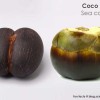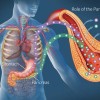We have all experienced some kind of headache somewhere in our lives. The pain in your head might have been sharp, dull, throbbing and enough to make you want to bang your head against a wall (although this might just make things worse). You can experience different types of headaches, each one caused by lots
We have all experienced some kind of headache somewhere in our lives. The pain in your head might have been sharp, dull, throbbing and enough to make you want to bang your head against a wall (although this might just make things worse). You can experience different types of headaches, each one caused by lots of different triggers such as food allergies, stress, dehydration, disease or heat.
Where does the pain from a headache come from?
Sometimes when you have a headache it might feel as if the pain is coming from your brain; however this is not the case. The brain has no nerves that can tell you that your brain is feeling pain. Nerves are string like fibres (parts) in your body that carry messages between different parts of your body and your brain. When you touch something very warm with your fingertips, the warm feeling travels through your nerves and lets your brain know that your fingers touched something warm. The pain that you feel when you have a headache comes from tissue and structures around the brain, for example from the meninges (thin membrane covering the brain); muscles around the skull, eyes, and sinuses.
Symptoms of a headache:
You may experience pain anywhere on your head, or at the base of your skull. The pain may also radiate up from your back and shoulders, into your head. The type of pain may be a throbbing, stabbing or a burning feeling. Some people may experience blurred vision and their headache may cause them to feel eye pain at the back of the eye, as in the case when you have a migraine. In some cases a headache may be so severe that a person can experience nausea, and fatigue (tiredness) and start to vomit. This can greatly affect their daily activities.
Categories of headaches:
Most headaches fall under primary (first) or secondary (after the first) headaches. A headache is placed into one of these two categories, based on where the headache pain comes from (what causes it).
Primary headaches:
Primary headaches are caused by problems of structures in your head that might be pain sensitive. A primary headache is not a symptom of a certain disease. It might be caused by the nerves or blood vessels of your head, around your skull, or muscles of your neck or head. Some examples of headaches that are placed under the primary category type headaches are tension headache, cluster headache and migraines.
Sometimes certain activities or lifestyle factors can also cause primary headaches. Examples are exertion headache (caused by physical or mental effort, such as picking up heavy objects or concentrating hard during exams); headaches after eating due to certain food allergies; headaches due to alcohol (sometimes a person may be allergic to sulphur that can be found in wine and may experience a headache when they drink it); poor posture; skipped meals; heat headache; and headache after exercise.
Secondary headaches:
Let’s look at secondary headaches. Secondary headaches are caused by a disease that can make the pain-sensitive nerves in your head feel pain. Conditions that may cause secondary headaches are acute sinusitis (severe infection of your sinuses); blood clots within the brain; meningitis (inflammation of the membranes surrounding your brain and spinal cord); and brain tumours.
Headache remedies:
There are lots of medicine that you can use to help you gets rid of a headache, but make sure to try some of these natural remedies first:
- Peppermint oil: Apply some of the oil to your temples and around your hairline so that it can help to relax your muscles.
- Ginger tea: Crush quarter of a teaspoon fresh ginger and place it into a cup of boiling water. Drink it, when cold enough for you to drink. The ginger tea helps to reduce inflammation.
- Feverfew: Is a herb that does not taste so good, but you can buy it in pill form or cut up three tablespoons of the fresh herb and mix it with your butter that you use as a spread or for cooking.
- Massage: Go for a massage or ask someone to massage your shoulder and neck muscles so that you can relieve tension and increase the blood flow in your muscles.
- Drink water: This is more of a preventative cure for headaches. Make sure that you drink at least eight glasses of water per day.
- Yoga and stretching: Yoga exercises and stretching can help to relax and loosen your muscles and relieve your headache.
- Acupuncture: Fine needles are inserted into specific points on your body and causes tight muscles to relax.
- Apply heat or cold: To relax your muscles you can apply a heat pad or heat pack to the back of your neck. Try using a cold ice pack when you have a throbbing headache.
- Sleep: Try to take a nap (if you can). The headache may disappear when you wake up.
When none of the natural remedies seem to take care of your headache, you can try taking an aspirin for headaches. Make sure to eat something before you take an aspirin, because it can damage your stomach and intestinal lining. Anti-inflammatory medication and muscle relaxants can also be used to take care of your headache. Make sure to go to a healthcare practitioner when you are in severe pain or if you get chronic headaches.
What remedy do you use to get rid of a headache?
















































Leave a Reply